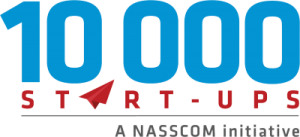Choosing the right SaaS-based Cloud Payroll Application for your business is essential for ensuring an accurate and efficient payroll processing. To help you make an informed decision, here are some key features to look in a payroll appplication.
User-Friendly Interface:
- The software should have an intuitive and user-friendly interface to make it easy for you and your team to navigate and use.
Automated Payroll Processing:
- Look for a system that automates the payroll process, including calculating wages, taxes, and deductions.
Tax Compliance:
- Ensure the system handles tax calculations accurately and keeps up with changing tax laws and regulations.
Direct Deposit:
- The ability to offer direct deposit to employees can save time and reduce the risk of errors associated with paper checks.
Customization:
- The ability to customize payroll settings to match your company’s specific needs, including pay schedules and deductions.
Time Tracking Integration:
- Integration with time tracking systems can streamline payroll by automatically importing hours worked.
Employee Self-Service:
- Allow employees to access their pay stubs, tax forms, and update personal information through a self-service portal.
Compliance Reporting:
- Ensure the system generates and files necessary reports for government compliance, such as Form 19, Form 16, Form 13, Form 3A & Form V.
Multi-State and Multi-Country Support:
- If your business operates in multiple locations or countries, make sure the payroll system can handle the complexity of different tax laws and regulations.
Mobile Accessibility:
- A mobile app or responsive web interface can be valuable for managing payroll on the go.
Integration with Accounting Software:
- Compatibility with your accounting software can streamline financial record-keeping and reporting.
Data Security and Compliance:
- Look for strong data encryption, regular security audits, and compliance with data protection regulations (e.g., GDPR, HIPAA).
Cost Transparency:
- Understand the pricing structure, including any additional fees for additional features or support.
Customer Support and Training:
- Good customer support and training resources can be crucial, especially when you’re transitioning to a new payroll system.
Scalability:
- Ensure that the payroll system can grow with your business, accommodating an increasing number of employees and complexities.
Analytics and Reporting:
- Access to payroll reports and analytics can help you gain insights into labor costs and other financial metrics.
Comprehensive Record-Keeping:
- The system should maintain a historical record of payroll data for auditing and reporting purposes.
Third-Party Integrations:
- Consider whether the system can integrate with other HR and business software you use, such as benefits administration or time tracking.
Compliance with Local Laws:
- For any business, the system should be compliant with local payroll laws and regulations in each state of operation.
Data Backup and Recovery:
- Ensure there are robust data backup and recovery mechanisms in place to protect against data loss.
Before choosing a SaaS-based Cloud Payroll Application, it’s essential to assess your business’s specific needs and budget. Additionally, consider conducting a trial or getting recommendations from other businesses in your industry to ensure the chosen system aligns with your requirements and expectations.









